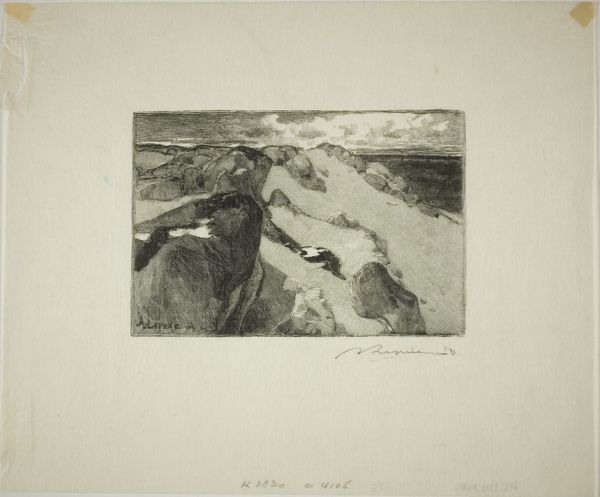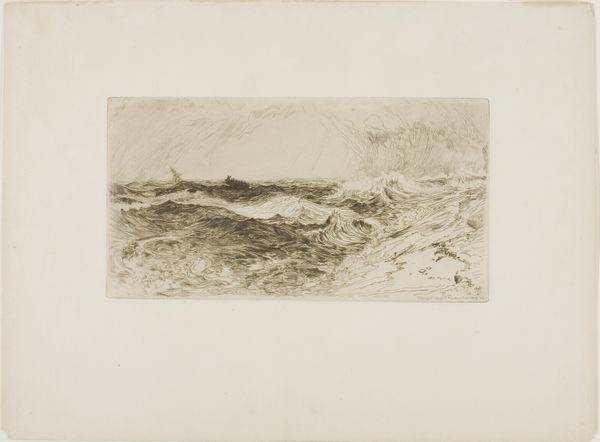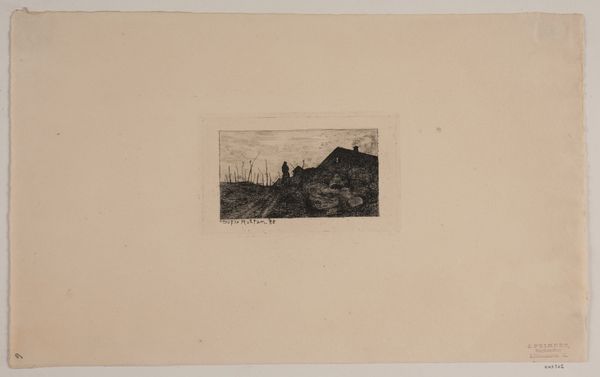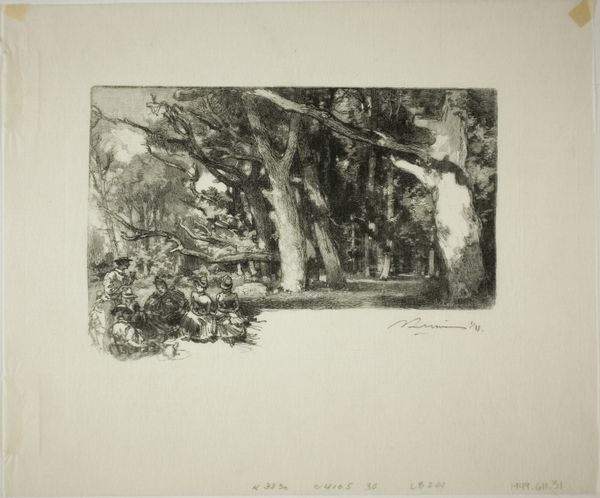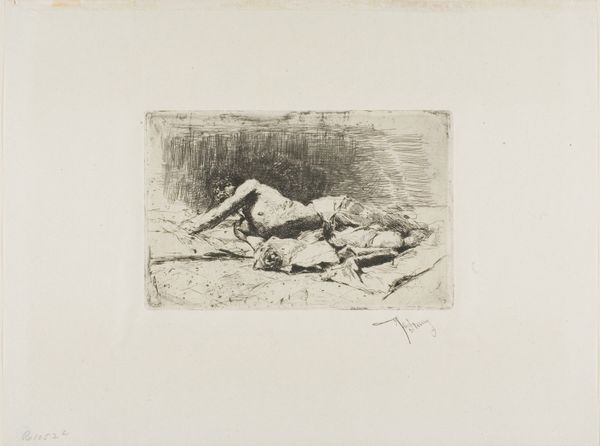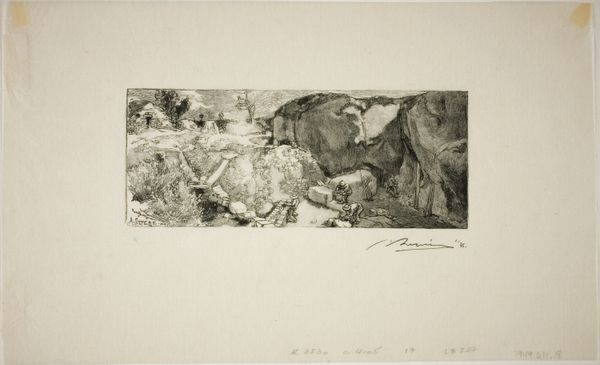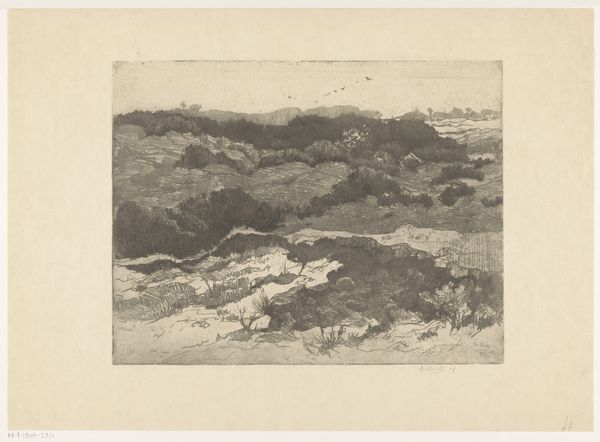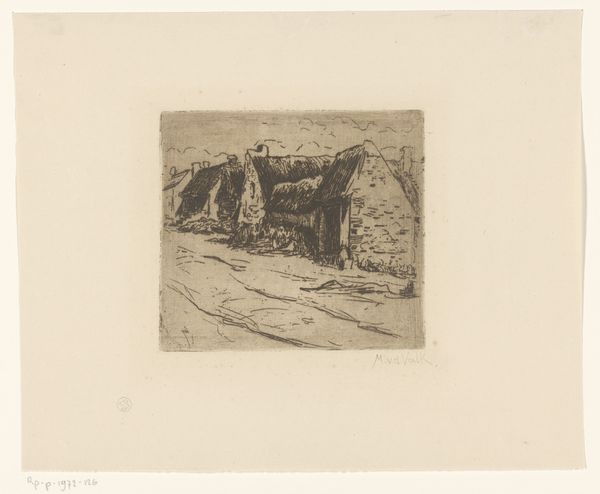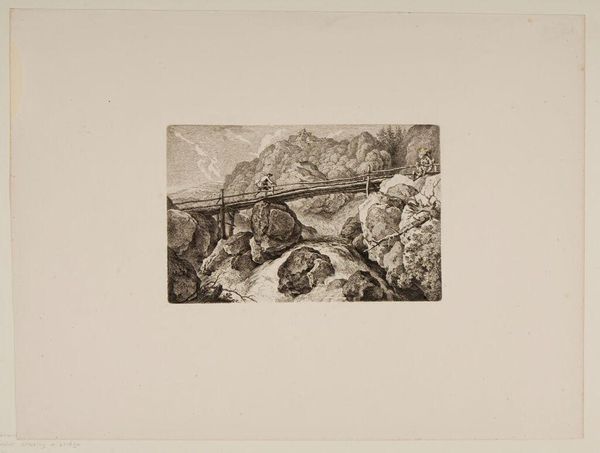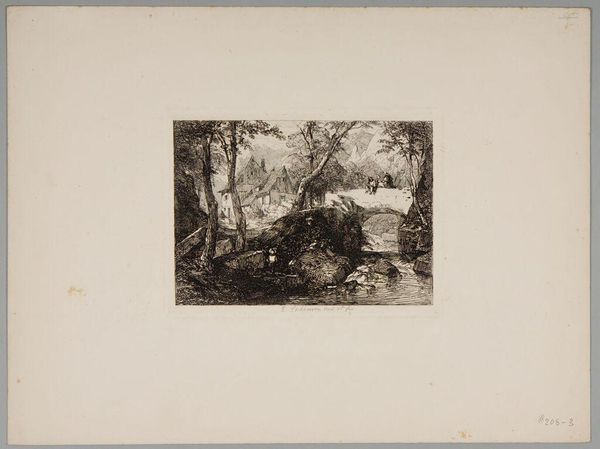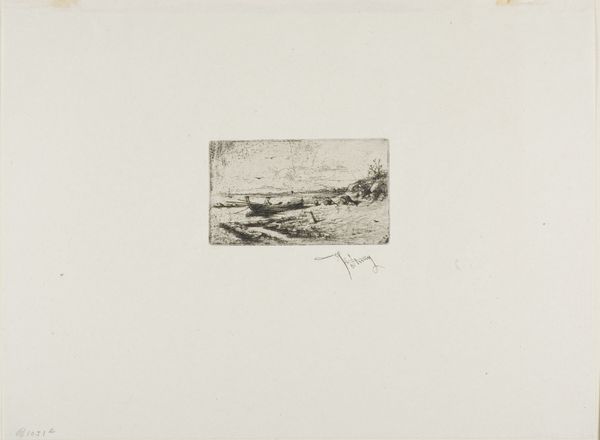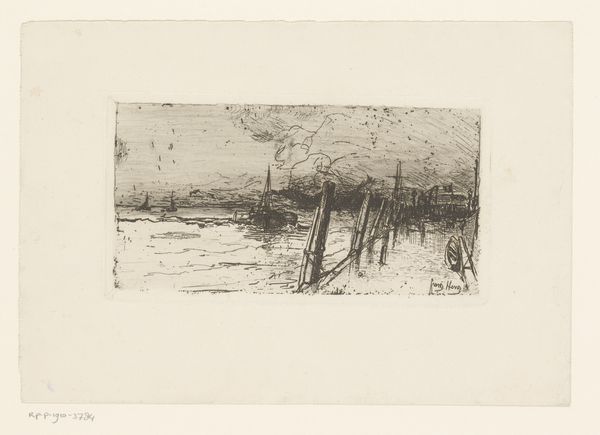
drawing, print, paper, engraving
#
drawing
# print
#
landscape
#
paper
#
engraving
Dimensions: 81 × 161 mm (image); 192 × 270 mm (sheet)
Copyright: Public Domain
Editor: Here we have Auguste-Louis Lepère’s "Le Cirque du Long-Rocher," possibly from 1908, a print made with engraving on paper. It's incredibly textural – the rocks seem almost palpable. What strikes you about this piece? Curator: Immediately, I see the labor involved in creating this intricate landscape. Look at the sheer density of the engraving – a testament to Lepère's skill, but also the time and physical effort poured into the process. This was a mass producible artwork, democratizing art for those who could not afford large-scale paintings. Do you see that interplay between art and industry reflected? Editor: I see the detail now, but it's also interesting that a "landscape" becomes a consumer product of sorts. I'm curious about the choice of subject matter – rocks, almost like raw material. Curator: Precisely. Consider the cultural moment: early 20th century, increasing industrialization, and a growing fascination with the “natural.” Lepère offers us not an idealized nature, but one presented through the very material process of printmaking. What implications can you extract from it? Editor: I guess it challenges the romantic view of nature, doesn’t it? By showing the hand of the artist, and making it reproducible, it brings nature down to earth – accessible, almost a commodity. Curator: Exactly. And think about where this print might have been displayed - likely in middle-class homes, a contrast to the grand landscapes owned by the aristocracy. The labor inherent in its creation reflects the labor of those who consumed it. So, how do you see Lepère navigating these socio-economic forces? Editor: I hadn't considered that at all! It reframes the landscape itself – and its making – within social structures. Thanks! Curator: Indeed. Examining the artwork in terms of process opens up interesting conversations about how social contexts affected even what we see.
Comments
No comments
Be the first to comment and join the conversation on the ultimate creative platform.
